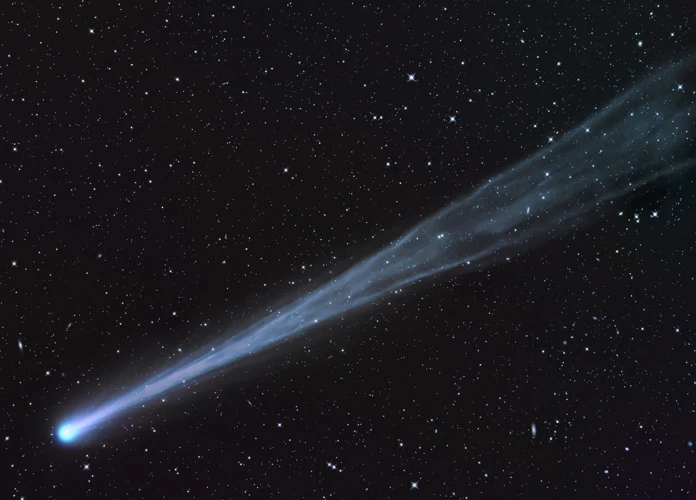Contents
- Unveiling the Celestial Spectacle: Famous Historical Comets and their Significance
- Ancient Comets
- Comets in Scientific Discoveries
- Comets in Arts and Culture
- Cometary Beliefs and Superstitions
- Conclusion
-
Frequently Asked Questions
- What is a comet?
- Why do comets have tails?
- How long do comets take to orbit the Sun?
- Can you see comets with the naked eye?
- Are comets dangerous to Earth?
- Can comets contain valuable resources?
- How do scientists study comets?
- Have any spacecraft visited comets?
- Can comets be used to study the early Solar System?
- Do comets play a role in astrology?
- References
-
Frequently Asked Questions
- 1. How are comets formed?
- 2. What is the significance of the Great Comet of 1680?
- 3. How often does Halley’s Comet appear?
- 4. What makes Comet Hale-Bopp significant?
- 5. What is the story behind Comet Shoemaker-Levy 9?
- 6. What is the significance of Comet 67P/Churyumov-Gerasimenko?
- 7. How is the Great Comet of 1680 depicted in Vincent van Gogh’s “The Starry Night”?
- 8. What is the significance of “The Comet Song” in The Moomins?
- 9. How have comets been perceived as omens and harbingers throughout history?
- 10. How are comets interpreted in astrology?
- References
- Read More
Unveiling the Celestial Spectacle: Famous Historical Comets and their Significance

In the vast expanse of the night sky, comets have captivated humanity’s imagination for centuries. These ethereal wanderers, with their luminous trails and unpredictable appearances, have left an indelible mark on history, science, arts, and cultures around the world. From ancient times to the modern era, their mystique and significance have shaped our understanding of the cosmos. Join us on a journey through time as we explore the tales of renowned comets that have dazzled the skies and influenced our lives in profound ways. From ancient superstitions to groundbreaking scientific discoveries, these celestial visitors have ignited our curiosity and continue to remind us of the awe-inspiring wonders that lie beyond our earthly realm.
Ancient Comets
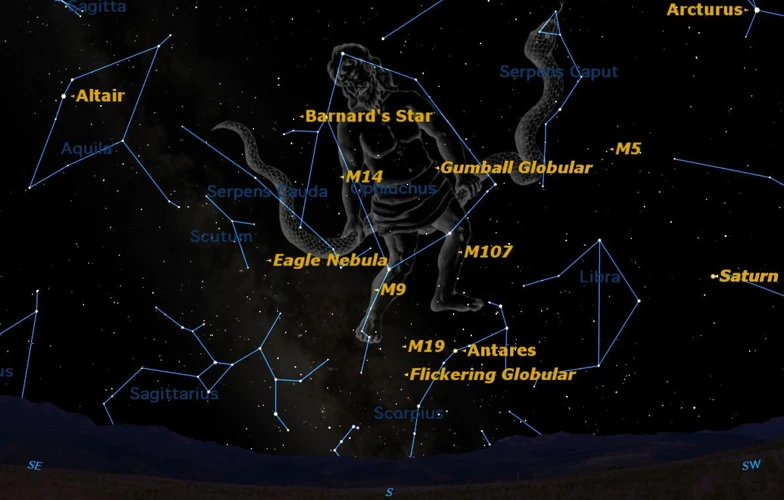
In ancient times, comets were often considered celestial omens, with their sudden appearances and bright tails stirring both fear and wonder among civilizations. One of the most renowned comets is The Great Comet of 1680, which graced the skies in the late 17th century. It was visible for several months and was observed by famous astronomers like Sir Isaac Newton and Gottfried Wilhelm Leibniz. Another notable comet in ancient history is Halley’s Comet, named after the astronomer Edmund Halley, who calculated its orbit. This periodic comet has made numerous appearances throughout history, inspiring myths, artworks, and scientific studies. Additionally, the Comet Hale-Bopp of 1997 became a sensation as it remained visible to the naked eye for an extraordinary 18 months, captivating skywatchers around the globe. With their awe-inspiring beauty and celestial wonder, ancient comets left an enduring impact on the minds of humanity.
The Great Comet of 1680
In 1680, a celestial spectacle captured the attention of astronomers and the general public alike: . This remarkable comet, also known as Kirch’s Comet, was first observed by German astronomer Gottfried Kirch and his wife Maria. It graced the nighttime sky with its noticeable brilliance for several months. The Great Comet of 1680 reached its perihelion, the point closest to the sun in its orbit, in December of that year. It was visible to the naked eye, with an elongated tail extending across the sky. Its appearance ignited the curiosity of renowned scientists like Sir Isaac Newton and Gottfried Wilhelm Leibniz, who carefully observed its movements and made significant contributions to the understanding of cometary orbits. This spectacular comet fascinated people around the world and left a lasting impact on the field of astronomy. Its remarkable presence in the heavens during this period sparked scientific inquiry and underlined the profound influence that comets have had on human history and the pursuit of knowledge.
Halley’s Comet
Halley’s Comet, named after the English astronomer Edmund Halley, is one of the most fascinating and well-known comets in history. This periodic comet has a remarkable orbit that brings it close to Earth every 76 years. Halley’s Comet has been observed and documented since ancient times, with records of its appearances dating back to as early as 240 BC. Its last visit to the inner solar system was in 1986, and its next appearance is estimated to be in 2061. The significance of Halley’s Comet lies not only in its regularity but also in the scientific discoveries it has enabled. In 1705, Edmund Halley used his mathematical skills to calculate the orbit of the comet and accurately predicted its return based on his observations and the works of other astronomers. This made Halley’s Comet the first ever predicted and named comet.
Throughout history, Halley’s Comet has sparked legends, prophecies, and artistic interpretations. Ancient cultures often viewed the comet as a harbinger of both doom and great events. Its recurring nature made it a symbol of continuity and cosmic order, while its unpredictable appearances added an air of mystery and fear. Artists such as Mark Twain and Vincent van Gogh were inspired by the comet’s beauty and included it in their works. Halley’s Comet has also played a role in popular culture, with references found in books, movies, and music.
The scientific importance of Halley’s Comet cannot be overstated. Multiple missions have been launched to study the comet up close, including the European Space Agency’s Giotto spacecraft in 1986. These missions provided valuable data about the comet’s nucleus, composition, and formation. The study of Halley’s Comet has contributed to our understanding of the early solar system and the origins of comets themselves.
Notably, one unique aspect of Halley’s Comet is its connection to the Eta Aquarids meteor shower. The shower occurs annually in May when Earth passes through the comet’s debris trail left behind during previous visits. This celestial event allows stargazers to witness a spectacular display of meteors as the debris burns up in the Earth’s atmosphere.
Halley’s Comet has mesmerized and intrigued humanity for centuries. Its predictable return and rich history make it a remarkable celestial phenomenon. From ancient beliefs and artistic inspiration to scientific discoveries and meteor showers, Halley’s Comet continues to captivate our collective imagination and reminds us of the vast mysteries of the cosmos.
Reference: [Halley’s Comet](https://en.wikipedia.org/wiki/Halley%27s_Comet)
Comet Hale-Bopp
Comet Hale-Bopp, discovered independently by Alan Hale and Thomas Bopp in July 1995, became one of the most widely observed comets of the 20th century. This comet, with its distinct blue-green coma and long tail, captured the fascination of both amateur and professional astronomers. Hale-Bopp’s unusually long visibility period of 18 months allowed people around the world to witness its breathtaking beauty. It was visible even in light-polluted areas, making it accessible to a wider audience. The comet sparked a surge of public interest and led to countless stargazing events, where people gathered to catch a glimpse of this celestial marvel. Astronomers seized the opportunity to study its composition and learn more about the solar system’s origin. The observations of Hale-Bopp provided valuable insights into the volatile nature of comets and their role in shaping our understanding of the universe. Its impact on popular culture was also significant, with many artists incorporating its image into their works. The enduring legacy of Comet Hale-Bopp continues to inspire and awe, reminding us of the mysterious wonders that lie beyond our reach in the cosmos.
Please let me know what would you like to have as next headline?
Comets in Scientific Discoveries
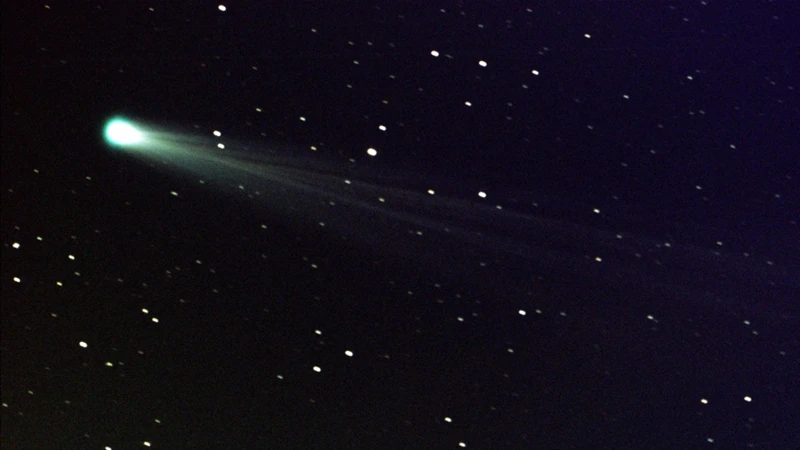
Comets have played a crucial role in scientific discoveries, unlocking new insights into the mysteries of our universe. One remarkable example is Comet Shoemaker-Levy 9, which captured the attention of scientists and stargazers in 1994. This comet’s trajectory brought it on a collision course with Jupiter, resulting in a series of dramatic impacts. The event provided astronomers with a unique opportunity to study the effects of comet collisions, leading to groundbreaking research on the dynamics of celestial bodies. Another significant comet is Comet 67P/Churyumov-Gerasimenko, which was the target of the European Space Agency’s Rosetta mission. This mission allowed scientists to gather invaluable data about the composition and structure of comets, shedding light on the origin and evolution of our solar system. Through these and other scientific endeavors, comets have served as cosmic messengers, enriching our understanding of the universe we inhabit.
Comet Shoemaker-Levy 9
Comet Shoemaker-Levy 9 holds a significant place in scientific history due to its unique and groundbreaking event. Discovered in 1993 by astronomers Carolyn and Eugene M. Shoemaker and David Levy, this comet became famous for its unprecedented collision with the planet Jupiter in July 1994. What made this event truly remarkable was that it was the first observed collision between two celestial bodies in our solar system. The comet had fragmented into multiple pieces after being captured by Jupiter’s gravitational pull two years prior, creating a string of “cometary pearls” that would go on to collide with the gas giant over a six-day period. The impacts resulted in massive fireballs exploding in Jupiter’s atmosphere, leaving dark scars visible for weeks. This extraordinary event allowed scientists to study the dynamics of comet impacts and gain valuable insights into the composition and structure of both comets and Jupiter. The data collected during this event provided crucial information about the composition of comets and the conditions in Jupiter’s atmosphere, deepening our understanding of planetary science. The collision of Comet Shoemaker-Levy 9 with Jupiter served as a stark reminder of the chaotic and dynamic nature of our celestial neighborhood. The event captured the attention of the scientific community and the general public alike, showcasing the vast and mysterious wonders that exist beyond our planet.
Comet 67P/Churyumov-Gerasimenko
Comet 67P/Churyumov-Gerasimenko, named after its co-discoverers Klim Churyumov and Svetlana Gerasimenko, is a celestial wanderer that gained immense fame and scientific significance in recent years. This comet belongs to the Jupiter family and was first observed in 1969. However, it achieved worldwide recognition when the European Space Agency’s Rosetta spacecraft successfully landed its Philae probe on its surface in 2014, marking the first-ever soft landing on a comet. The mission provided scientists with invaluable data about the composition and structure of comets, shedding light on the early solar system’s formation. The unique shape of 67P, resembling a rubber duck, and the unexpected discovery of organic molecules on its surface sparked further excitement in the scientific community. Researchers continue to analyze the wealth of data gathered from the Rosetta mission, deepening our understanding of comets and their role in the cosmic evolution. The exploration of Comet 67P/Churyumov-Gerasimenko has undoubtedly left an indelible mark in the annals of comet research, further fueling our curiosity about the mysteries of the universe.
Comets in Arts and Culture
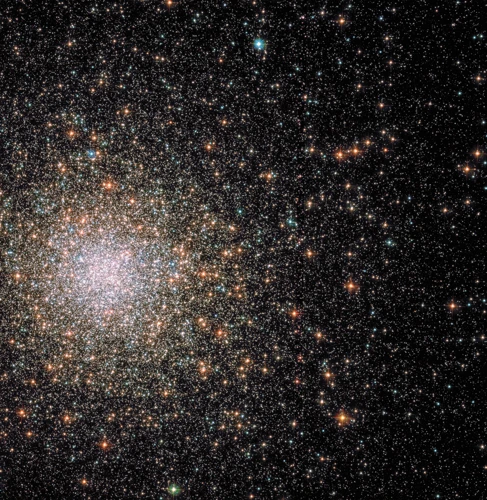
Throughout history, comets have had a profound impact on arts and culture, inspiring artists, writers, and musicians to depict these celestial wonders in their creative works. One example is The Starry Night by Vincent van Gogh, where he captured the mesmerizing beauty of a vibrant night sky featuring a vivid comet. This iconic painting has become a symbol of the artist’s turbulent emotions and his close connection with the natural world. Another instance is The Comet Song in The Moomins, a beloved children’s book series by Tove Jansson. The song celebrates the joy and excitement of a comet’s visit, highlighting its enchanting presence and the sense of adventure it brings to the characters. These artistic interpretations not only showcase the visual impact of comets but also their ability to evoke emotions, ignite imagination, and remind us of the transcendent nature of the cosmos.
The Starry Night by Vincent van Gogh
Vincent van Gogh’s masterpiece, The Starry Night, is an iconic painting that showcases the artist’s profound connection to nature and his emotional turmoil. Completed in 1889 during his stay at the Saint-Paul-de-Mausole asylum in France, the painting depicts a serene night sky with swirling stars, a radiant crescent moon, and a sleepy village below. The sky in the painting is often interpreted as a representation of van Gogh’s troubled state of mind, with the vibrant, swirling brushstrokes capturing his inner turmoil. The stars in the painting have been subject to various analyses and interpretations, with some art historians speculating that they represent comets or meteors streaking across the night sky. Van Gogh’s fascination with astronomy is evident not only in The Starry Night but also in several other works where he depicted celestial bodies and celestial events. The painting’s ethereal beauty and expressive style continue to captivate viewers, making it one of van Gogh’s most celebrated and recognized works of art. The planetary alignments and the mesmerizing depiction of the night sky in The Starry Night serve as a testament to the enduring influence of comets, stars, and the celestial realm on artistic inspiration.
The Comet Song in The Moomins
“The Comet Song” holds a special place in the hearts of fans of the beloved animated series, The Moomins. This enchanting song was featured in the episode titled “The Last Dragon on Earth,” which aired in 1990. The episode revolves around a comet that is set to pass close to Moominvalley, causing excitement and anticipation among its residents. The song, beautifully composed by Tove Jansson and performed by the character Snufkin, captures the magical and mysterious nature of comets. It speaks of the comet’s journey through the night sky and the sense of wonder and awe it brings. The lyrics are poetic and resonate with the celestial beauty of these cosmic visitors. In the context of The Moomins, the song represents the joy of discovery, exploration, and the unity it brings to the characters. It is a reminder of the significance of celestial events and the wonders they inspire in our imaginations. Fans of The Moomins not only appreciate the delightful melodies and harmonies of “The Comet Song” but also cherish the timeless message it conveys about embracing the mysteries of the universe.
Cometary Beliefs and Superstitions
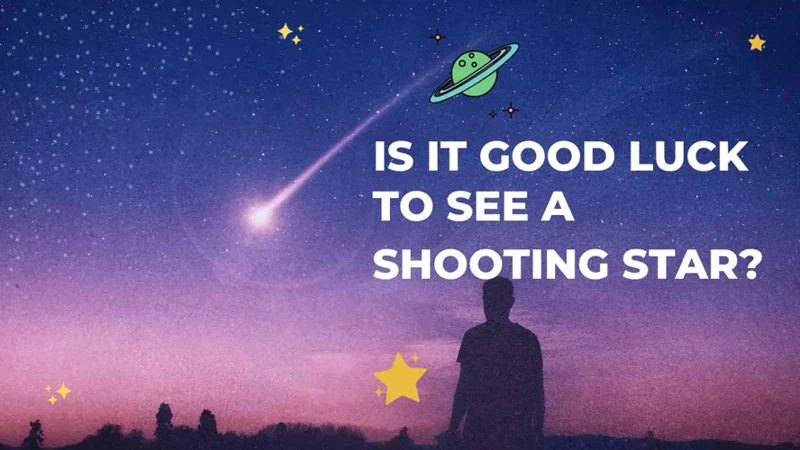
Throughout history, comets have ignited a plethora of beliefs and superstitions among various cultures. Considered omens and harbingers of change, comets have invoked both fear and fascination. Ancient civilizations interpreted the sighting of comets as significant events linked to impending doom, wars, or the birth of great leaders. One such example is the belief that Comets as Omens and Harbingers foretold the fall of empires or the coming of disasters. These beliefs were deeply ingrained in societies, shaping their actions and decisions. Even in astrology, comets hold symbolic importance. While not governed by standard astrological interpretations, comets are sometimes associated with unpredictability and unexpected shifts in the zodiac. Whether as mystical omens or celestial messengers, the influence and symbolism of comets in human culture have endured for centuries, reminding us of the delicate interplay between the vast universe and our earthly existence.
Comets as Omens and Harbingers
Throughout history, comets have often been seen as omens and harbingers, believed to foretell significant events and changes in the world. In ancient cultures, such celestial spectacles were thought to be messages from the gods or signs of impending doom. For example, the appearance of a comet was seen as a warning of war, famine, or the fall of kingdoms. In medieval Europe, the appearance of a comet could spark panic and anxiety, as people associated it with calamities and the wrath of God. These beliefs were not limited to Europe alone; ancient Chinese and Mayan civilizations also regarded comets as omens of disaster or political turmoil. The symbolic power of comets as harbingers of change extended into literature and art. William Shakespeare’s play “Julius Caesar” features the character of Calpurnia, who pleads with her husband not to go to the Senate, citing the sighting of a comet as an ill omen. Comets continue to intrigue us today, though our understanding of their nature and origins has evolved through scientific advancements. Nonetheless, the historical significance of comets as omens and harbingers of change remains an integral part of our cultural and intellectual heritage.
Comets in Astrology
Astrology, the ancient practice of studying celestial bodies, holds a significant place in many cultures. Comets, with their extraordinary appearances, have not escaped the fascination of astrologers throughout history. In astrology, comets are seen as powerful omens, believed to carry profound messages and influences that can impact individuals and society as a whole. While comets do not have a fixed place in the astrological tradition like the planets or constellations, their sporadic appearances and dramatic displays have been associated with moments of transformation, upheaval, and spiritual awakening. Astrologers interpret comets as catalysts for change, representing accelerated growth or the need to release and let go of the old to make way for the new. Some believe that comets signify the emergence of hidden talents, the manifestation of destiny, or even the arrival of karmic events. Although there is no scientific evidence to support the influence of comets in astrology, their mythical allure continues to captivate astrologers and enthusiasts alike, adding another layer of cosmic enchantment to the ancient art of interpreting celestial signs. For those interested in exploring deeper into astrology and its various aspects, understanding planetary aspects in natal charts can provide valuable insights into the complex interplay of celestial energies in an individual’s birth chart.
Conclusion

As we conclude our exploration of famous historical comets and their significance, we are reminded of the profound impact these celestial marvels have had on human civilization. From ancient times, when comets were viewed as omens and harbingers, to the modern era, where they have played a pivotal role in scientific discoveries and artistic inspiration, comets have always held a special place in our collective consciousness. Their appearance in the night sky continues to evoke a sense of wonder, reminding us of the vastness and beauty of the universe. Whether it is the Great Comet of 1680, Halley’s Comet, or Comet Hale-Bopp, these celestial visitors have ignited our curiosity, inspired artistic masterpieces, and pushed the boundaries of our scientific understanding. As we gaze up at the heavens, let us cherish these cosmic wanderers and appreciate the enduring legacy they leave behind.
Frequently Asked Questions

What is a comet?
A comet is a celestial object made up of ice, dust, and small rocky particles. When a comet approaches the Sun, the heat causes the ice to vaporize, creating a glowing coma (a cloud of gas) around the nucleus. The coma and the dust particles reflect sunlight, creating a visible tail that can extend for millions of kilometers.
Why do comets have tails?
Comets have tails because of the heat from the Sun. As a comet approaches the Sun, the heat causes the icy nucleus to vaporize and release gas and dust particles. The solar wind and radiation pressure then push these particles away from the Sun, creating a glowing tail that points away from the Sun.
How long do comets take to orbit the Sun?
The time it takes for a comet to complete one orbit around the Sun varies greatly. Some periodic comets, like Halley’s Comet, have predictable orbits and come around every few decades or centuries. Other comets, known as long-period comets, can take thousands or even millions of years to complete a single orbit.
Can you see comets with the naked eye?
Yes, some comets are visible to the naked eye when they come close to Earth and the Sun. These comets often have bright and visible tails that make them easier to spot, especially in dark, clear skies away from light pollution.
Are comets dangerous to Earth?
While comets are intriguing celestial objects, they do not pose a direct threat to Earth. The chances of a comet colliding with our planet are extremely rare. However, the dust and gas released by a comet’s tail can interact with our atmosphere, producing stunning meteor showers.
Can comets contain valuable resources?
Yes, comets are believed to contain valuable resources such as water, organic compounds, and metals. These resources could be of great importance for future space exploration and colonization efforts, as they could provide vital supplies and materials for astronauts.
How do scientists study comets?
Scientists study comets using a variety of methods. Space missions, such as the European Space Agency’s Rosetta mission, have sent spacecraft to rendezvous with comets, collecting data and even landing on their surfaces. Ground-based telescopes and observatories also contribute valuable information about comets’ composition, structure, and behavior.
Have any spacecraft visited comets?
Yes, several spacecraft have visited comets to study them up close. The ESA’s Rosetta mission successfully orbited and landed on Comet 67P/Churyumov-Gerasimenko in 2014, providing valuable data and images of the comet’s nucleus and activity. NASA’s Stardust and Deep Impact missions have also encountered comets during their missions.
Can comets be used to study the early Solar System?
Yes, comets are often referred to as “time capsules” because they contain ancient materials from the birth of our Solar System. By studying the composition of comets, scientists can gain insights into the chemical and physical processes that occurred billions of years ago when the Solar System was forming.
Do comets play a role in astrology?
Yes, in astrology, comets have been associated with certain astrological events and have symbolic meanings. However, it is important to note that astrology is not a scientific discipline and does not have a basis in empirical evidence or astronomical observations.
References
Frequently Asked Questions

1. How are comets formed?
Comets are formed from a mixture of ice, dust, rock, and various gases. These materials come together in regions of space far from the sun, where the temperatures are extremely cold. Over time, the gravity of nearby objects causes these materials to clump together and form a nucleus, which becomes the core of a comet.
2. What is the significance of the Great Comet of 1680?
The Great Comet of 1680, also known as Kirch’s Comet, was one of the brightest comets observed in history. Its significance lies in the fact that it played a pivotal role in disproving the prevailing belief that comets were atmospheric phenomena. Its appearance helped scientists understand that comets are celestial objects that orbit the sun.
3. How often does Halley’s Comet appear?
Halley’s Comet, named after the astronomer Edmond Halley, appears approximately once every 76 years. Its periodic appearance has been documented since ancient times, and it is one of the most famous comets known to humanity. Its next predicted return is in 2061.
4. What makes Comet Hale-Bopp significant?
Comet Hale-Bopp gained significant attention in the late 1990s due to its exceptionally bright appearance. It was visible to the naked eye for an extended period, allowing millions of people around the world to witness its beauty. This event sparked widespread interest in comets and astronomy among the general public.
5. What is the story behind Comet Shoemaker-Levy 9?
Comet Shoemaker-Levy 9 made headlines in 1994 when it collided with Jupiter. This event marked the first time astronomers witnessed a collision between two celestial bodies in our solar system. The impact released an enormous amount of energy and left dark spots on Jupiter’s surface, providing valuable insights into the dynamics of planetary collisions.
6. What is the significance of Comet 67P/Churyumov-Gerasimenko?
Comet 67P/Churyumov-Gerasimenko gained significance in 2014 when the European Space Agency’s Rosetta spacecraft successfully landed a probe called Philae on its surface. This was the first time humanity had landed a probe on a comet, providing valuable data about the composition and structure of comets.
7. How is the Great Comet of 1680 depicted in Vincent van Gogh’s “The Starry Night”?
In “The Starry Night,” Vincent van Gogh portrayed the Great Comet of 1680 as a luminous blue-white orb in the night sky. The comet’s presence adds an ethereal and mysterious element to the painting, contributing to the overall dreamlike atmosphere for which van Gogh’s work is famous.
8. What is the significance of “The Comet Song” in The Moomins?
“The Comet Song” is a musical piece featured in “The Moomins,” a beloved Swedish-Finnish animated television series. The song reflects the fascination and wonder associated with comets, emphasizing the importance of seizing the moment and embracing the beauty of the universe.
9. How have comets been perceived as omens and harbingers throughout history?
Throughout history, comets have often been associated with significant events or upheavals. They were regarded as omens of impending disasters, such as war, the death of rulers, or natural catastrophes. Over time, as scientific understanding improved, the superstitions and fears linked to comets diminished.
10. How are comets interpreted in astrology?
Comets hold different meanings in astrology depending on the cultural and historical context. Some astrologers associate comets with sudden change, unexpected events, or spiritual transformations. However, it is important to note that the interpretation of comets in astrology is not universally agreed upon and varies among practitioners.

